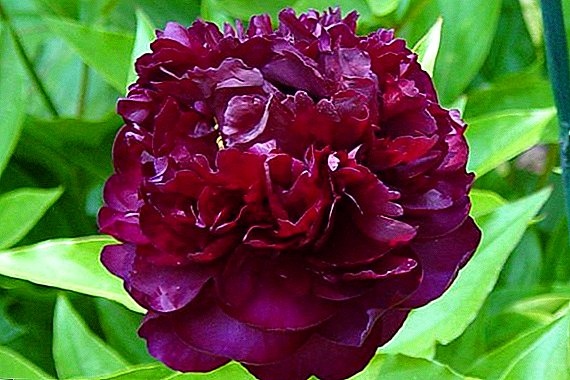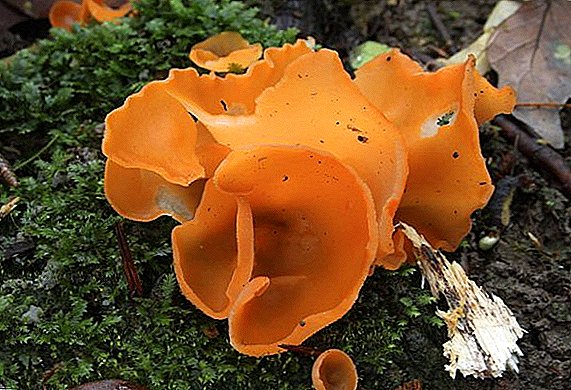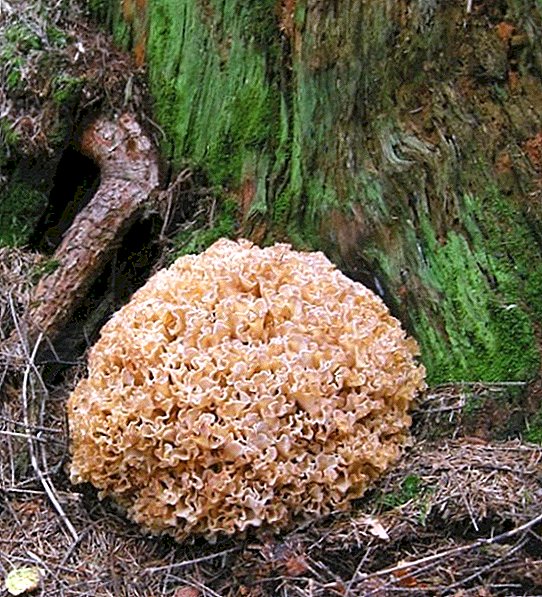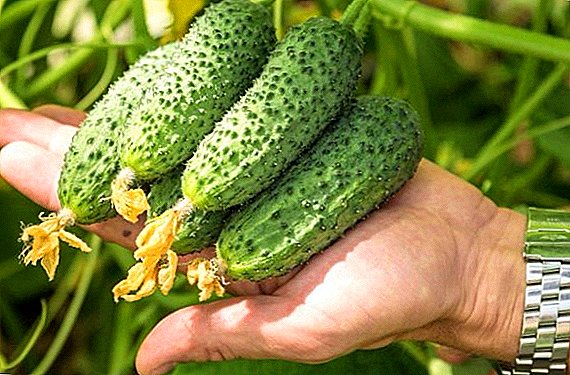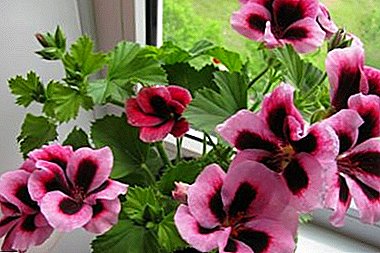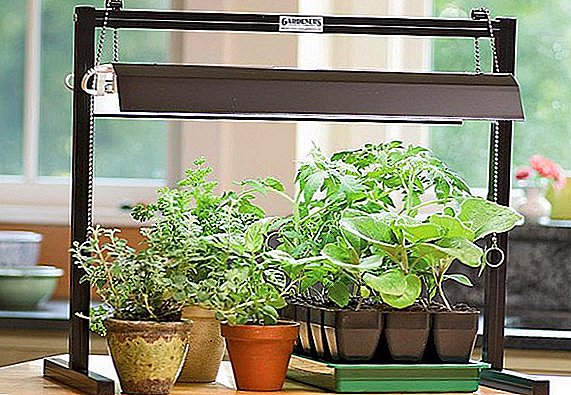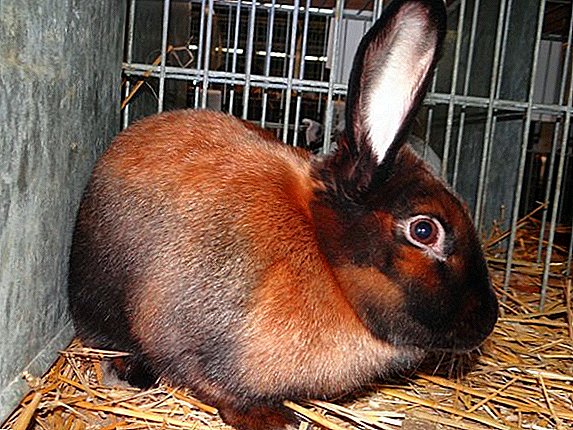 Today there are over 80 breeds of rabbits, including large, medium and dwarf. With such a variety, it is rather difficult to choose a species for breeding. In the article we will introduce you to one of the rare representatives of hares - the Thuringian krale. Consider what is necessary for its content, especially its feeding and character.
Today there are over 80 breeds of rabbits, including large, medium and dwarf. With such a variety, it is rather difficult to choose a species for breeding. In the article we will introduce you to one of the rare representatives of hares - the Thuringian krale. Consider what is necessary for its content, especially its feeding and character.
Breed origin
The breed we considered was bred at the end of the 19th and early 20th centuries. It is named so from the place of elimination - the German state of Thuringia. Arzhents, Flandres, Himalayan rabbits participated in breed selection.
Rabbit description
Thuringian breed refers to the meat-animal direction. The size of its representatives is small. But while the physique is stocky, dense.
Appearance
The body weight of the Thuringian rabbits reaches 3.5-4.5 kg. By the standards of rabbit breeders, this is an average weight. The animals have a somewhat flattened and broad head, located on a very short neck. The ears are fleshy, not long - 10 cm in length. Their ends are rounded.
We recommend that you familiarize yourself with the description and characteristics of the content of such meat-skinned rabbit breeds as Ober, New Zealand White, Russian Ermine, Gray Giant, Silver, Risen Gold, Poltava Silver, Rex, Belgian Giant and Vienna Blue.
In newborns, rabbits have a uniform, sand-colored fur. As they mature, dark brown spots appear on the skin, in the region of the muzzle, ears, hips and sides. The eyes are brown. The fur is thick, soft and smooth to the touch, with glitter. The length of the hairs is 3 cm. The limbs of rabbits are medium in length and muscular. 
Character
By nature, Thuringian crawls are friendly, flexible, active. Because of these characteristics in European countries, these animals are often bred as pets in apartment conditions.
Features of maintenance and care
Thuringian hares unpretentious. They do not require special conditions of detention, feeding. If you create the most comfortable conditions for the Thuringian rabbit, then its life expectancy will be up to 12 years. On average, they live about 8 years. Differ in rapid growth.
Cell selection
For a rabbit of this breed, a cage is suitable 4-5 times larger than itself. Since the animal is quite active, it must not only fit in it, but also move normally. It is important to remember that the crawls like to relax, stretching to their full height.
Read more about how to choose a cage for rabbits and how to make it yourself.
It is desirable that the height of the cage was not less than 60 cm, width - 60-70 cm, length - 1 m. The cage area for several individuals should be calculated on the basis of 0.15-0.20 square meters. m per 1 animal. The best conditions for the young are cells with walking from the nets. The length of such cells should be from 2 to 4 m, width - 1 m, height - 0.4-0.5 m.  The dwelling should be from durable quality materials that can serve for several years. Substandard products may harm the health of the animal. It is better if the cage is wooden. The dwelling should be equipped with feeders and a drinker made from ecological materials.
The dwelling should be from durable quality materials that can serve for several years. Substandard products may harm the health of the animal. It is better if the cage is wooden. The dwelling should be equipped with feeders and a drinker made from ecological materials.
Important! The cage must be made of wood, but not of conifers, because such designs have a strong odor that can be unpleasant to the animal. Painting a rabbit dwelling is strictly prohibited. Since the crawls love to gnaw the cages, there is a great risk that the paint will get into the animal's gastrointestinal tract and provoke poisoning.
They should be placed in a special aft compartment, with a mesh floor. Feeders should be several - for hay, feed, mineral supplements. Access to feeders and drinkers should be provided at all times. The cage should also be equipped with a place where the animal can retire. Straw is used as a litter, a layer of 10-20 cm.
Conditions of detention and care
The main conditions for keeping rabbits:
- good lighting;
- heat;
- dryness;
- good ventilation;
- lack of drafts.

The lowest possible temperature of air that craws can carry is -6 ° C. The highest is +35 ° C. The optimum temperature is + 12-18 ° С. Duration of daylight should be at least 17 hours. Humidity of air - 60-70%.
Requirements for air exchange in winter: 10-15 cu. m / h per rabbit (short-term airing), in summer: 30-50 cubic meters. m / h per rabbit (light draft). Cells should be cleaned as they become contaminated. Disinfection of housing and equipment produced 1 time per month.
Important! The cage must be covered up or rearranged from direct sunlight, since there are frequent cases of heat stroke in rabbits.
Vaccination
One of the important conditions for keeping rabbits is vaccination. Vaccinations help avoid mass epidemics from the most common infections and keep the herd healthy. While babies feed on mother's milk, their health is protected by natural immunity, which is formed due to the special antibodies that make up the food.
Video: Rabbit Vaccination However, after the young growth begins to eat adult food, these antibodies no longer arrive, and they are not produced by the body independently. Therefore, it is important to build immunity against common infections with regular vaccinations. As a rule, vaccination is made 1 time in 6 months.
The most important vaccinations are:
- against viral hemorrhagic disease;
- against myxomatosis.
Also, animals are vaccinated against paratyphoid fever, pasteurellosis, streptococcal infection. The veterinarian can be vaccinated or, after his clear instructions, the breeder independently.
Did you know? Rabbits sleep with their eyes open. The fact is that they are very shy, so even during sleep they cannot fully relax and immediately wake up at every rustle. The ability to fall into a deep sleep and sleep with eyes closed is acquired only by decorative rabbits living in comfortable conditions in an apartment and accustomed to the fact that they are not in danger.
Feeding Thuringian rabbits
The feeding characteristics of representatives of the Thuringian breed do not differ from other pedigreed rabbits. Adults are fed 2-3 times a day, rabbits during lactation and baby rabbits up to the age of 2.5 months - 4 times.
The main condition for feeding animals is fresh balanced feed. The basis of the diet consists of vegetable feed. Animal feed is introduced in small quantities, as a vitamin and mineral supplements.
The menu of rabbits will vary depending on the season. In winter, the feed must be more nutritious so that the animal can receive the energy necessary to maintain body temperature. At this time, it is very good to introduce compound feed into the diet.
Also the number and composition of feed will depend on the age and sex of the rabbit, the period of its development. Below we give recommendations on drawing up an exemplary menu for the 1st individual in the summer and winter periods.
In the summer
| The period of development of rabbits | Green food, g | Concentrated feed, g | Salt, chalk, g |
| Fattening | 700 | 70 | 1 |
| During the rest period | 600-700 | 30 | 1 |
| During the mating period | 800 | 40 | 1 |
| During pregnancy | 800 | 40-50 | 1 |
| During lactation | 1200 | 60-70 | 1,5 |
| 1-2 months old | 300 | 20 | 0,5 |
| 3-4 months old | 500 | 40 | 0,5 |
| At the age of 5-7 months | 600 | 55 | 1 |
In winter
| The period of development of rabbits | Hay, g | Succulent feed, g | Concentrates, g | Salt, chalk, g |
| Fattening | 150 | 500 | 80 | 1 |
| During the rest period | 150 | 150 | 40 | 1 |
| During the mating period | 150 | 200 | 55 | 1 |
| During pregnancy | 175 | 200 | 60 | 1 |
| During lactation | 200 | 300-400 | 85-90 | 1,5 |
| 1-2 months old | 50 | 100-150 | 35 | 0,5 |
| 3-4 months old | 100 | 300 | 50 | 0,6 |
| At the age of 5-7 months | 150 | 350 | 75 | 1 |
When feeding animals with different types of food, so that their digestion is comfortable, food is given in the following sequence: concentrates, juicy food.
Video: feeding rabbits in winter
Thus, in winter, feeding should end with hay, and in summer - with greens.
Important! In order not to harm the health of animals, they are strictly forbidden to give food with a high content of simple carbohydrates, for example, sweets, sugar, cookies. These foods significantly increase the risk of obesity.
Breeding conditions
After the young growth reaches 2 months of age, boys and girls are divided into separate cells. Sexual maturity of these animals occurs at about 4 months of age. However, they can be done when the rabbit's weight exceeds 2.5 kg, otherwise it will be difficult for her to bear and give birth to babies. Breeding rabbits can occur at any time of the year.
Before the process, individuals who have any defects are culled. For mating female run into the cage to the male in the morning and evening. After which it is re-deposited in their home. Pregnancy lasts 29-31 days. At this time, the rabbit is fed a complete feed with a high protein content and provides it with enough water.  During pregnancy and lactation, the approximate daily diet of a bunny may look like this:
During pregnancy and lactation, the approximate daily diet of a bunny may look like this:
- green food - 300 g;
- sunflower meal - 40-60 g;
- sunflower meal - 30 g;
- fodder yeast - 5 g;
- fish oil - 4 g;
- meat and bone meal - 7 g;
- bone meal - 3 g;
- chalk - 3 g;
- salt - 2.5 g
In winter, are given the mash from alfalfa, legumes, bran, mineral supplements. If the breeding of rabbits is planned, then you should worry in advance about the arrangement of a special removable compartment in which the female will give birth and feed the babies, the queen plant.
It will be useful for you to read about when you can allow the rabbit to be mated, how long it lasts and how to determine the sugaryness of the rabbit, when it is possible to set the rabbit away from the rabbit, how to determine the sex of the rabbit, and how to feed the feeding rabbit after the rabbit and how to feed the rabbit without the rabbit.
This is a box-like design, closed on all sides, with a small manhole with a diameter of 15-18 cm and a removable lid. It is installed in the rabbit's cage. It should create the most comfortable conditions for mothers and babies - darkness, warmth, spaciousness.  Such requirements are necessary to make the rabbit feel lonely and comfortable. Inside the queen cell there should be a litter filled with a thick layer. The design should be insulated or equipped with additional heating. Litter is 6-12 kids. Rabbits are born bald and blind. They open their eyes on the 10th day. For 3-4 weeks they eat mother's milk. In the future, begin to eat themselves.
Such requirements are necessary to make the rabbit feel lonely and comfortable. Inside the queen cell there should be a litter filled with a thick layer. The design should be insulated or equipped with additional heating. Litter is 6-12 kids. Rabbits are born bald and blind. They open their eyes on the 10th day. For 3-4 weeks they eat mother's milk. In the future, begin to eat themselves.
Did you know? The device of the rabbit's reproductive system allows them to carry 2 litters from different males at the same time. The female uterus has no body. It consists of 2 horns, each of which opens into the vagina, and 2 necks.
As long as they are kept with the mother in the mother liquor, litter should be replaced regularly and should not be exposed to excessive moisture and dirt. Otherwise, a small percentage of young stock can survive. Thus, the Thuringian rabbits are very beautiful animals in appearance, with valuable skin and tasty meat.
They are unpretentious to the conditions of detention and feeding. This breed did not receive wide popularity among rabbit breeders and today is rather rare. In Europe, due to its peace-loving nature and decorative qualities, it is often kept in residential conditions.




